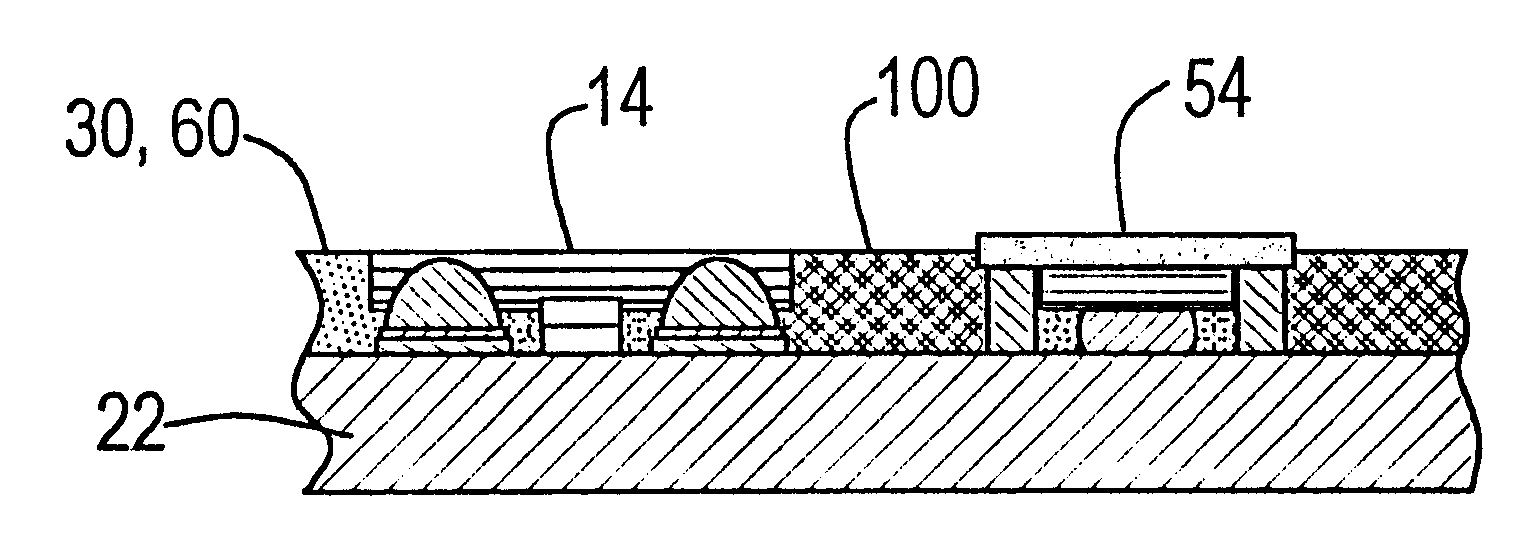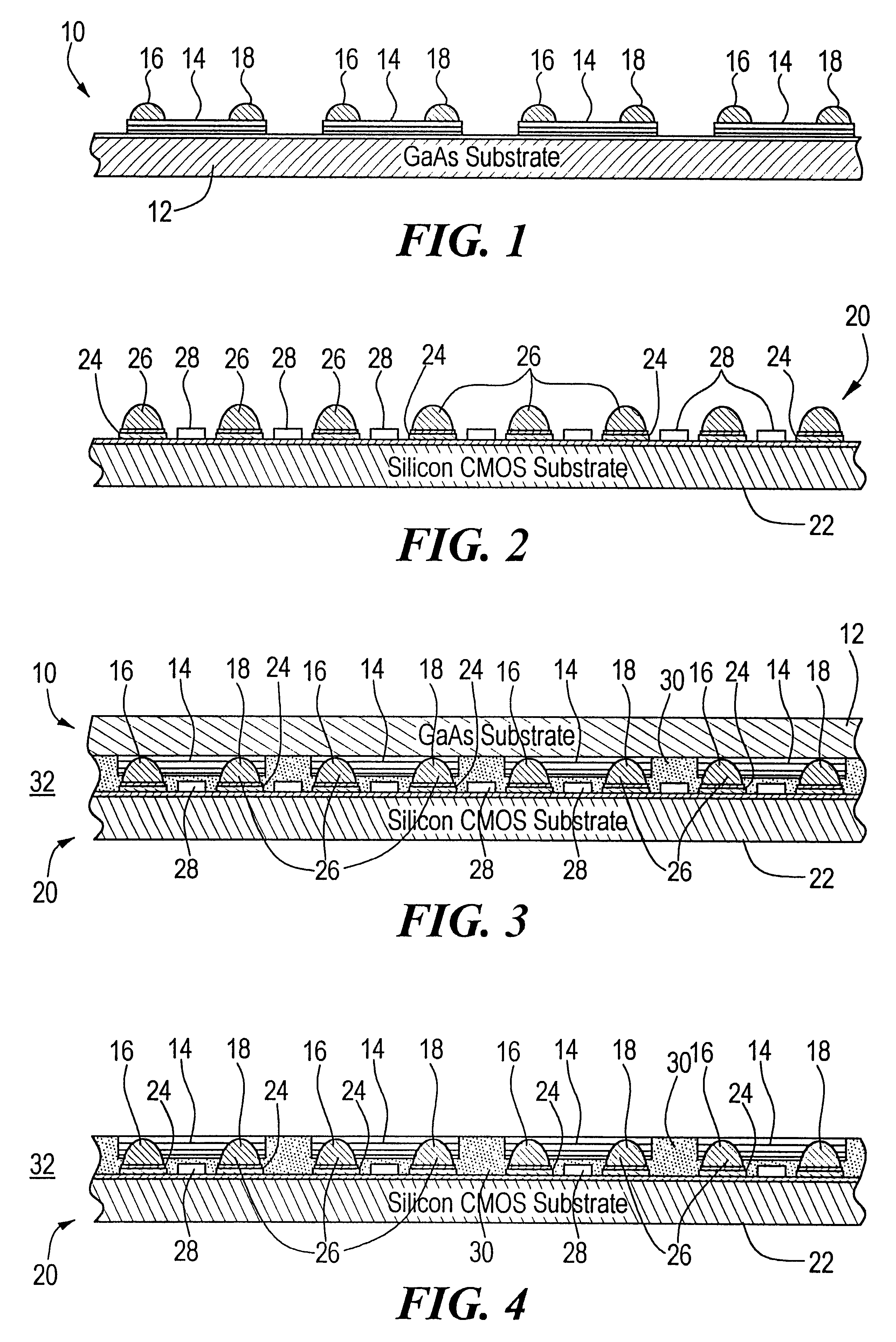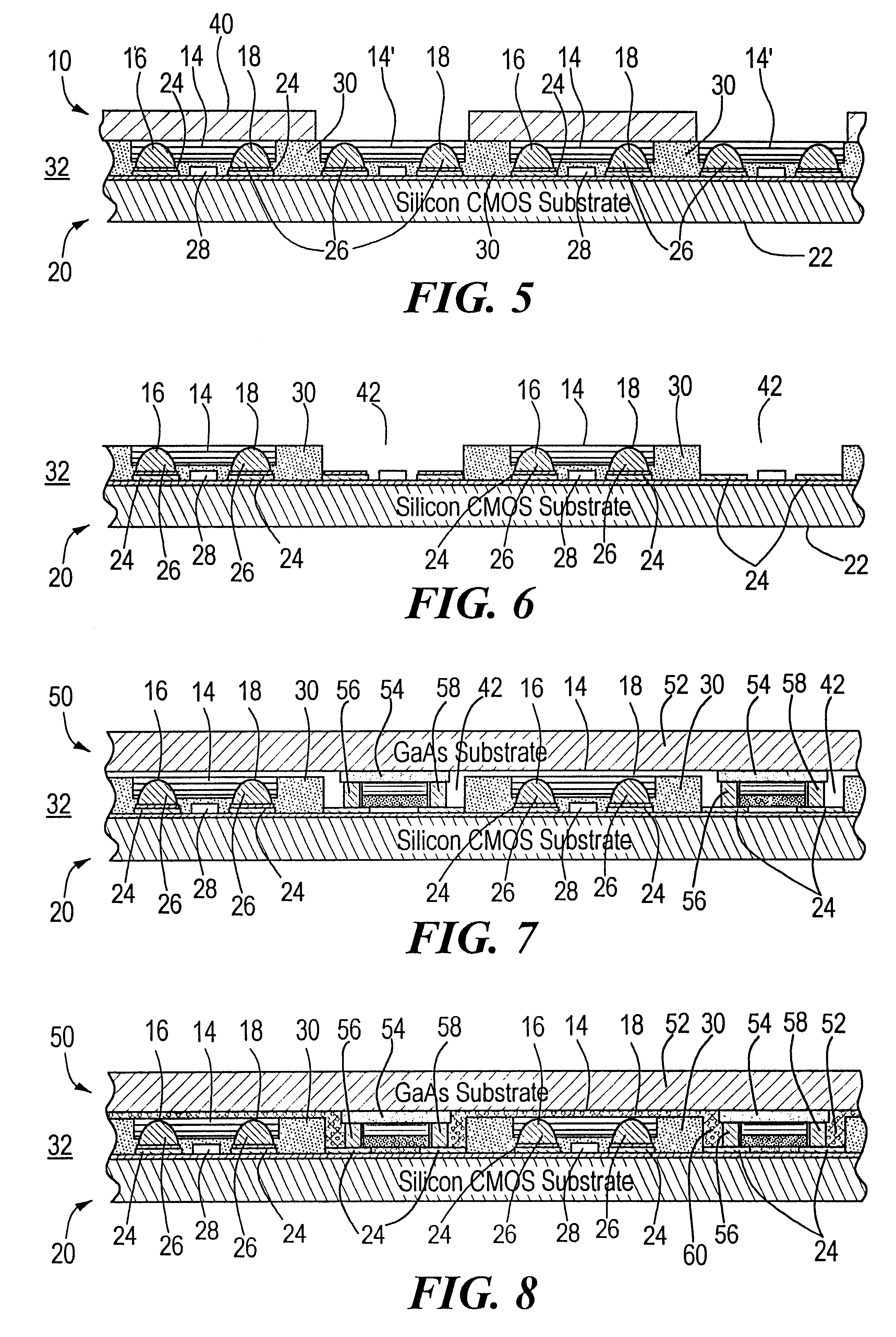Electro-optical transceiver system with controlled lateral leakage and method of making it
a transceiver and optical technology, applied in the direction of lasers, semiconductor laser structural details, semiconductor lasers, etc., can solve the problems of data transfer into and out of processors, light leakage laterally, and noise in the received signal
- Summary
- Abstract
- Description
- Claims
- Application Information
AI Technical Summary
Benefits of technology
Problems solved by technology
Method used
Image
Examples
Embodiment Construction
There is shown in FIG. 1 a first chip 10 including a GaAs substrate 12 having grown on it a number of vertical cavity surface emitting laser (VCSEL) emitters 14. Mounted on each of the VCSELs 14 are a number of solder balls or bumps two of which are shown 16 and 18. Some of these devices 14 are actually dummy devices and will be removed as seen subsequently with respect to FIGS. 5 and 6.
The second chip 20, FIG. 2, includes a silicon CMOS substrate 22 which carries a number of metal landing pads 24 each containing a solder ball or bump 26 so arranged that they mate with the solder bumps 16 and 18 of chip 10, FIG. 1. Also shown on chip 20 are portions 28 of an electronic circuit in this case an application specific integrated circuit (ASIC).
The first chip 10, FIG. 1 is flip-chipped and bump bonded onto the second chip 20 as shown in FIG. 3 and filled with an underfill 30 such as an epoxy, a photoresist, or any other suitable flowable hardener. Underfill 30, FIG. 3, fills the voids bet...
PUM
 Login to View More
Login to View More Abstract
Description
Claims
Application Information
 Login to View More
Login to View More - R&D
- Intellectual Property
- Life Sciences
- Materials
- Tech Scout
- Unparalleled Data Quality
- Higher Quality Content
- 60% Fewer Hallucinations
Browse by: Latest US Patents, China's latest patents, Technical Efficacy Thesaurus, Application Domain, Technology Topic, Popular Technical Reports.
© 2025 PatSnap. All rights reserved.Legal|Privacy policy|Modern Slavery Act Transparency Statement|Sitemap|About US| Contact US: help@patsnap.com



